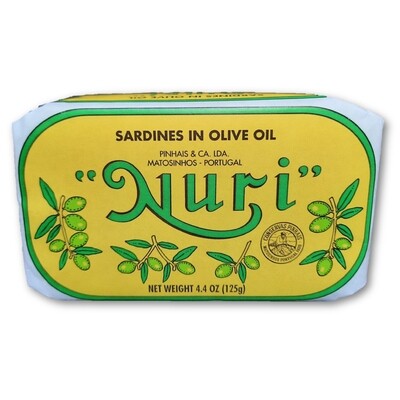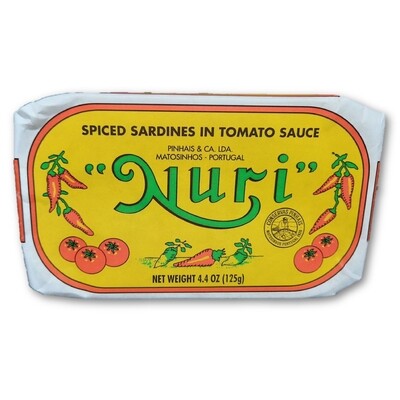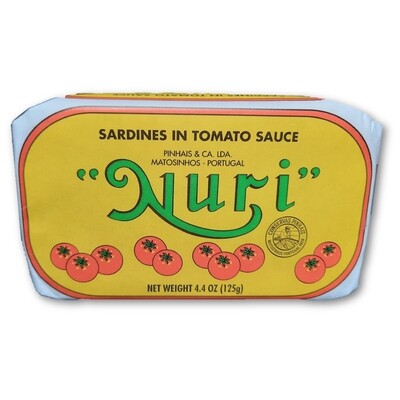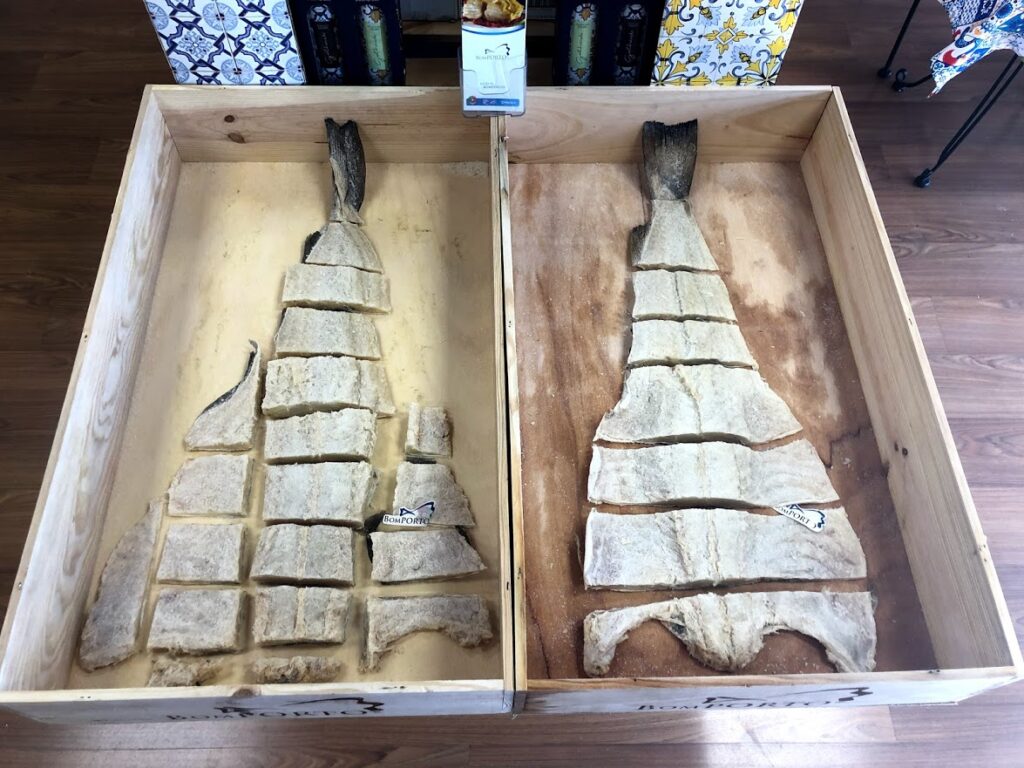
While typically with any dish you are preparing to make using Bacalhau with skin
and bone is best. The skin and bone help retain the flavor of the fish compared to
using boneless skinless fish. Depending on what dish you will be preparing some
cuts/pieces may work better.
Cutting Demonstration Video:
1 ) When cutting a whole fish with bone for example, you would start by cutting
off across the top mainly to give your first center loin a nice clean edge.
2) Two Popular Approaches – When working with whole fish here are a couple
popular ways to cut your fish
Above are two popular approaches to cutting a whole Bacalhau.
Cutting down each side of the center loins where the thickest meat ends and the
wings/bellies begin. Typically one side of the loins will have the biggest
transitions from the center loin and the wing/belly piece, while the other side will
have more of a tapered thickness where you must decide where to cut. The side
with the biggest transitions is due to how the fish is initially split before the
cleaning and salting.
3) The cuts also help determine which pieces you group together for the desalting
so as to get a more even salt level.
*You can view our desalting instructions here:
Instructions are in the more details section of each of the salted cod products on
our site. We will cover that topic again in a future edition.
4. Certain cuts are optimal for specific dishes.
Loins/Lombos (Thickest) – Baking, Grilling, or Frying.
Center Cuts/Postas – Shredded in your dish.
(Purchase Center Cuts / Postas here.)

*Loins/Lombos are typically the most desirable cut as long as you are comfortable with the desalting process, and are the easiest to work with, cooked whole or flaking for any type of dish.
See a video here on how easy to debone / flake:
Wings/Asas/Bellies – Frying or Stews
Meaty pieces almost boneless great for any preparation where you are flaking.

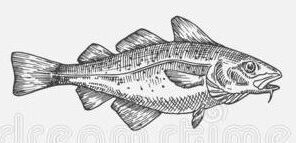
![Bom Petisco Solid Tuna in Olive Oil [BULK] 30 Cans (Free Shipping this Item) EXPIRE 10 2028 Bom Petisco Solid Tuna in Olive Oil [BULK] 30 Cans (Free Shipping this Item) EXPIRE 10 2028](https://d2j6dbq0eux0bg.cloudfront.net/images/9357036/1283005252.jpg)
